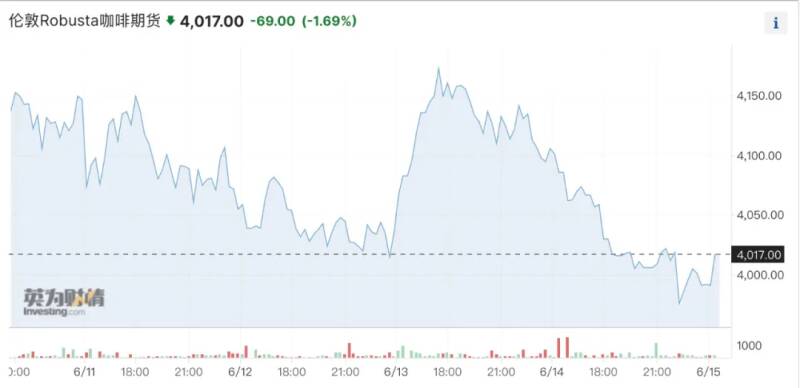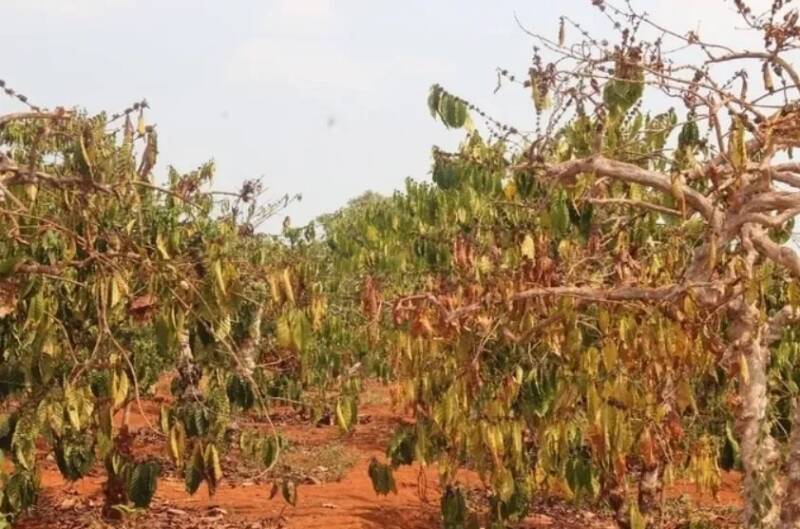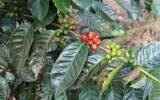Vietnamese coffee is in constant trouble! It will be possible to reduce planting area in the future
At present, the market price of Robusta coffee varieties, which Vietnam mainly exports, remains high. Although the Robusta coffee futures price has fallen, it still remains at US$4000/ton. This is mainly due to the reduction in output caused by many problems encountered by the Vietnamese coffee industry.

In fact, as international coffee prices have continued to rise in recent years, many local coffee farmers in Vietnam have also planned to expand their planting area. However, this year's El Niño phenomenon has caused Vietnam to encounter extreme weather such as high temperatures, drought and lack of rain, making local coffee planting face quite difficult situation.
In March and April this year, Vietnam has already encountered drought problems. Drought has caused the river beds of many reservoirs to be depleted and cracked, and groundwater resources are insufficient, causing coffee trees and other plants to wither and yellowing of leaves.

However, in May, Vietnam entered the rainy season, but the rainfall was still not enough to solve the drought problem. According to the local meteorological department, in May and now in June, the rainfall in Vietnam's main coffee-producing area, Kalai Province, received only 10-15 millimeters, which is not effective in alleviating the drought. In addition, most of the time it is just showers.
However, local farmers can only reduce the impact of extreme weather on coffee plants through extensive irrigation and other methods, but the results are minimal. In addition, local farmers said that the coffee trees grown in Vietnam are sensitive to temperature and grow well at temperatures of 24-28℃, but the current temperature is high, between 25-35℃, which leads to a decrease in yield and the quality of flowers and fruits. The quality of coffee has declined. In addition, when temperatures are higher, pests and diseases are also very easy to spread.
Therefore, according to Vietnam customs data, in May 2024, Vietnam exported 79358 tons of coffee, a decrease of 47.8% from the previous month. In the first five months of this year, Vietnam exported a total of 817514 tons of coffee, which is a decrease of 5.8% from the same period last year.
The decline in exports has kept Robusta coffee prices high. According to some coffee brands, some merchants have to go to Indonesia to buy coffee, but not much because Indonesian coffee prices are also high. In the end, many coffee brands now have to choose to increase prices.
However, in addition to the high price of coffee beans, the price of pepper is also rising. It is reported that in the first five months of 2024, Vietnam's export volume of various pepper reached 114,400 tons. Although it dropped by 13.2% year-on-year, the export volume of pepper reached US$493 million, a year-on-year increase of 20.6%. Among them, the average export price of black pepper was US$4197/ton, and the average export price of white pepper reached US$5804/ton, up US$754 and US$849 respectively.
Vietnam is the world's largest pepper exporter. Although production cuts are also due to weather conditions, these high-value crops are obviously more attractive to farmers due to limited market supply and high prices, which may reduce the coffee planting area in Vietnam in the future.
Important Notice :
前街咖啡 FrontStreet Coffee has moved to new addredd:
FrontStreet Coffee Address: 315,Donghua East Road,GuangZhou
Tel:020 38364473
- Prev

Introduction to Rolani Estate, 2024 Best Panama BOP Water Wash Champion
Panama coffee has a high reputation in the global coffee market. In addition to having the well-known rose summer varieties, it is also inseparable from the Panama Specialty Coffee Association (SCAP), which designed and organized BOP (Best Of Panama). Known as the best Panama). baanah
- Next

Seal the socket! Starbucks reduces costs and increases efficiency?!
▲ Click to pay attention| Daily Boutique Coffee Culture Magazine Coffee Workshop Recently, a customer went to a nearby Starbucks to order a cup of coffee. After she sat down, she found that the row of sockets that used to be against the wall were now all sealed. The customer said that these sockets were normal when he went to the store to consume, and they should have only recently been used by the store.
Related
- What effect does Italian American coffee with filter paper have? Will coffee taste better if it is put on filter paper at the bottom of the powder bowl?
- What is the color difference in coffee beans? What are the characteristics of honey processed coffee beans? Why are the anaerobically treated coffee beans uneven in color?
- How does novice Xiaobai quickly get started and make coffee? Newbies learn to make coffee by hand and share the specific steps and process process!
- Costa tea has a shelf life of 100 years?! Expert: Unable to verify
- It's a huge uproar! American milk addition was rejected by Manner employees?!
- Mocha pot coffee bean recommendations| How fine and how much powder should be used for grinding? What parameter ratios do I need to use to make milk with Mocha pot coffee?
- What are the characteristics of the world's top ten coffee beans treated with Costa Rica honey? How to make black honey kadura from Tarazhu Pilon Processing Plant taste good?
- How to make deep-roasted coffee? What grinding water temperature does authentic Jamaica Blue Mountain No. 1 coffee use to brew it well?
- Selected high-grade rose summer coffee flavor tasting guide Why Panama rose summer has the aroma of flowers and fruits
- What equipment does a novice Xiaobai need to buy to learn to make coffee? Filter cup electronic scale bean grinder manual flushing pot purchase guide

